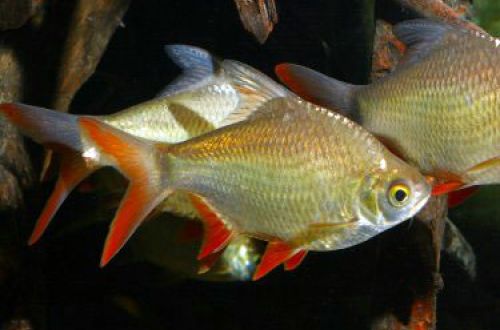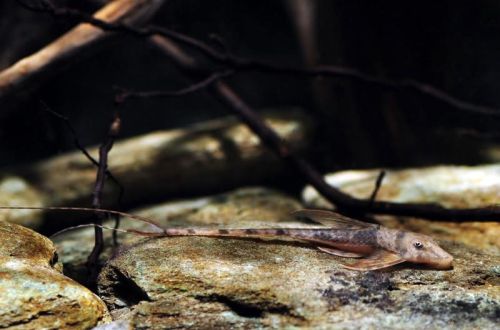
Pseudotropheus Aki
Pseudotropheus Aki (Acei), scientific name Pseudotropheus sp. “acei”, belongs to the Cichlidae family. Beautiful and relatively calm cichlid. It is considered a good choice for a beginner aquarist. Easy to keep and breed, does not require the creation of specific conditions.

Contents
Habitat
Endemic to the African rift lake Malawi (another name for Nyasa), located in the east of the continent between the countries of Malawi, Mozambique and Tanzania. It lives along the western coastline of the island, characterized by sandy and rocky substrates.
Brief information:
- The volume of the aquarium – from 100 liters.
- Temperature – 24-28°C
- Value pH — 7.6–8.8
- Water hardness – medium to high hardness (10-25 dGH)
- Substrate type – sandy
- Lighting – moderate
- Brackish water – no
- Water movement – weak, moderate
- The size of the fish is 10–12 cm.
- Nutrition – any with herbal supplements
- Temperament – conditionally peaceful
- Keeping in a harem with one male and several females
Description

Adults reach a length of about 10–12 cm. The color is blue or turquoise with yellowish fins. Sexual dimorphism is weakly expressed. Outwardly, it is problematic to distinguish a male from a female. However, by observing the behavior of these fish, gender can be determined accurately. More on that below.
Food
An omnivorous species that will accept most popular foods (dry, frozen, sinking) in a home aquarium. The main condition is that more than half of the diet should consist of plant products. Accordingly, it is impossible to feed exclusively on protein foods, for example, only bloodworms, brine shrimp, etc.
Maintenance and care, arrangement of the aquarium
The recommended volume of the aquarium for a pair of fish starts from 100 liters. The design uses sandy soil and heaps of boulders and stones, from which crevices and caves are formed. Any other elements can be used as a shelter, from hollow pipes and ceramic pots, to decorative objects in the form of castles, sunken ships, etc. The presence of natural driftwood is also welcome. Live plants are optional and can be damaged by fish.
Successful keeping depends largely on maintaining suitable water conditions. It is necessary to control all the main indicators (pH, dGH, the content of nitrites, nitrates, etc.) and, if deviations are found, bring them back to normal. Maintenance of an aquarium with Aki Pseudotropheus comes down to regular cleaning of glass from plaque and substrate from organic waste, as well as weekly replacement of part of the water (20–25% of the volume) with fresh water.
Behavior and Compatibility
Refers to representatives of the mbuna cichlids, characterized by a sharp and aggressive disposition. However, unlike its closest relatives, it has a milder character and can get along with other calm fish species. Intraspecific relationships are built on competition between males. Each of them occupies a certain area of the aquarium and zealously guards it from rivals, engaging in small skirmishes. Females, in turn, swim peacefully throughout the space and can unite in groups. Thus, in a small aquarium, there should be at least 3 females per male Pseudotropheus Aki.
Breeding / breeding
In a home aquarium, the appearance of fry is quite possible. The breeding method is unique for the cichlids of lakes Malawi and Tanganyika. During the mating season, the male chooses a flat stone in his territory. Cleans it up and starts inviting females to this makeshift nest. At this time, males become belligerent towards rivals and other fish, so it is advisable to breed in a separate tank with identical water conditions. When the female is ready, she accepts the courtship of the male and alternately releases small portions of eggs, which she immediately takes into her mouth after fertilization. The entire incubation period (3-4 weeks) will take place during the rut.
Fish diseases
The main cause of most diseases in Malawian cichlids is inadequate housing conditions and poor quality food, which often leads to such a disease as Malawi bloat. If the first symptoms are detected, you should check the water parameters and the presence of high concentrations of hazardous substances (ammonia, nitrites, nitrates, etc.), if necessary, bring all indicators back to normal and only then proceed with treatment. Read more about symptoms and treatments in the Aquarium Fish Diseases section.





